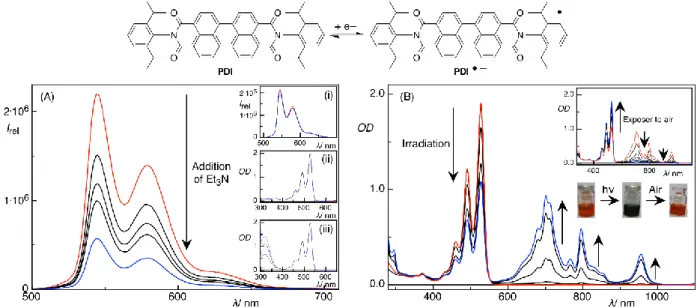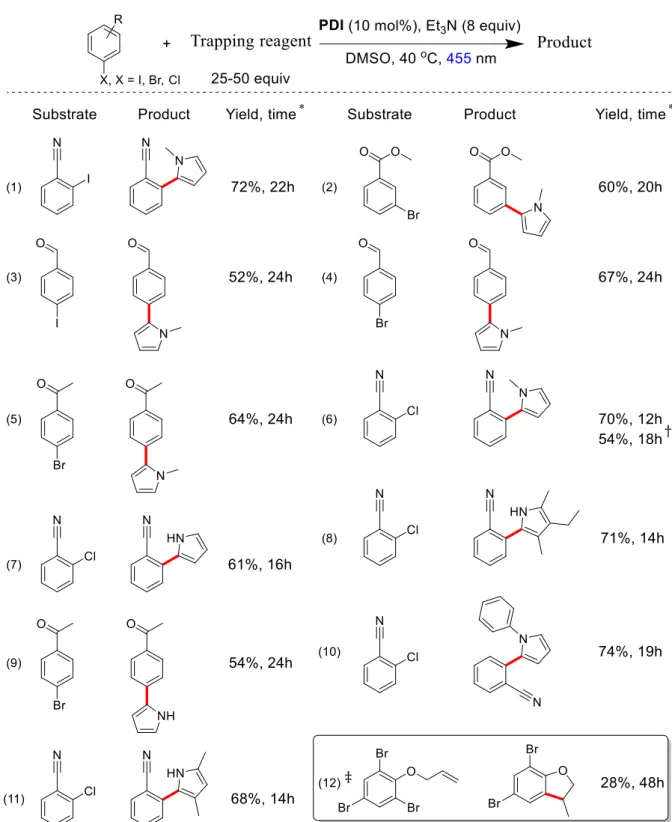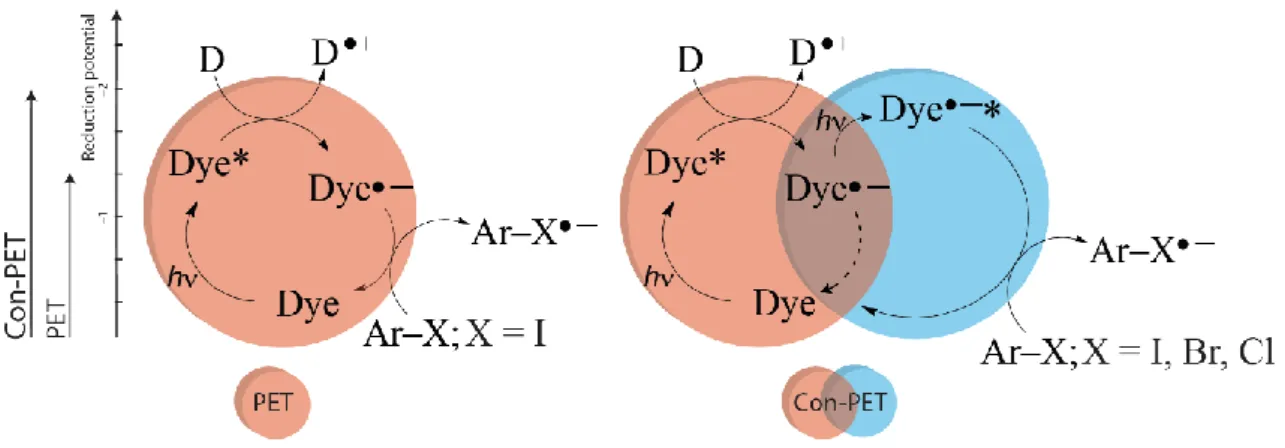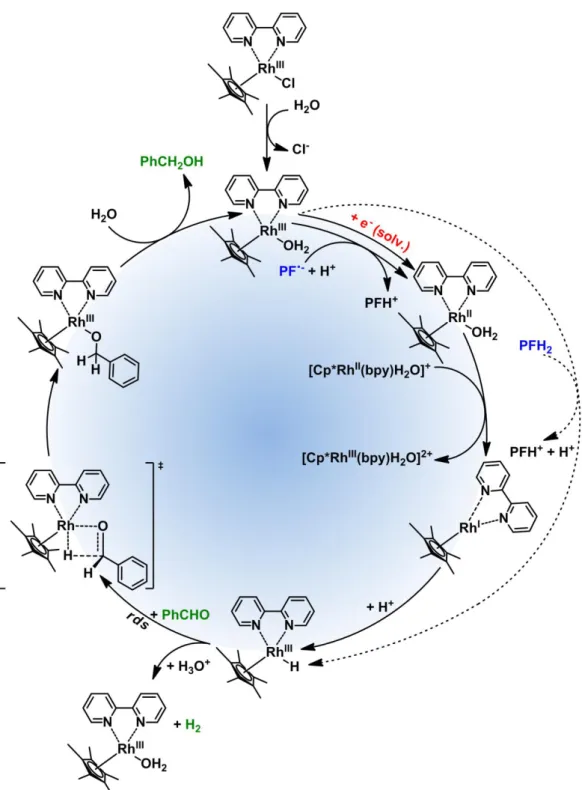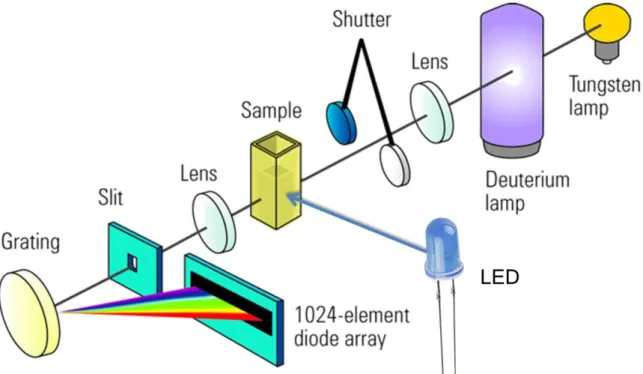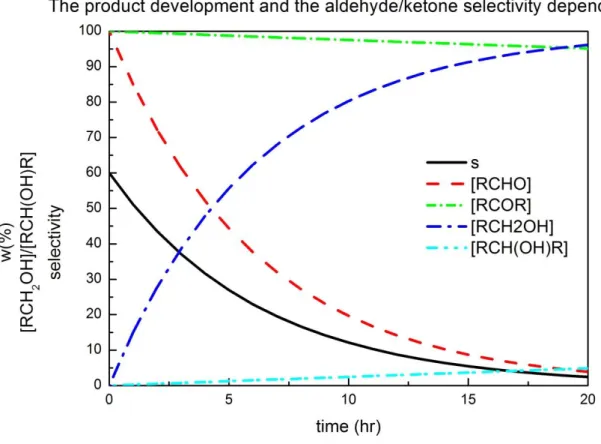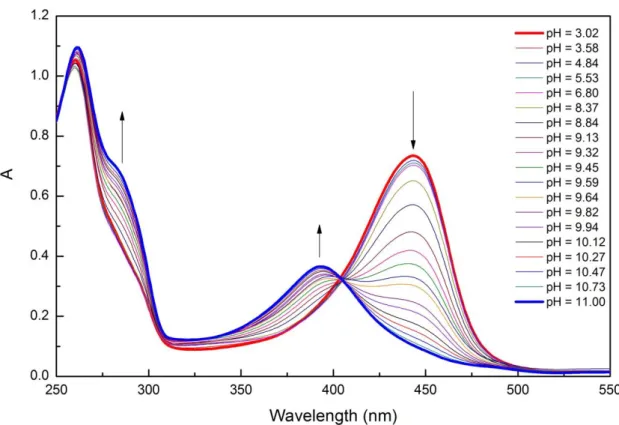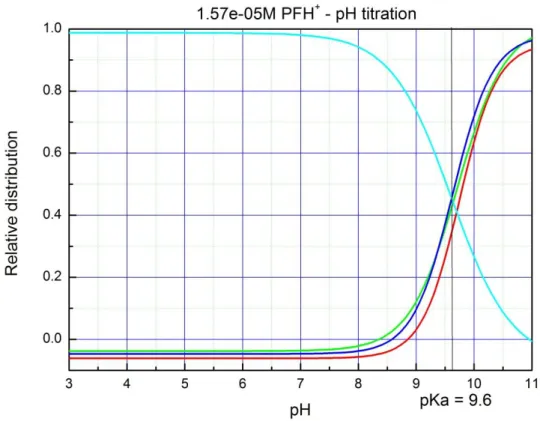Photoredox Catalysis in Organic Synthesis
Dissertation
Zur Erlangung des Doktorgrades der Naturwissenschaften (Dr. rer. nat)
an der Fakultät für Chemie und Pharmazie der Universität Regensburg
vorgelegt von
Tamal Ghosh
aus
West Bengal (Indien) 2016
University of Regensburg.
The Ph.D. thesis was submitted on: 28.07.2016
The colloquium took place on: 02.09.2016
Board of examiners: PD Dr. Sabine Amslinger (chair)
Prof. Dr. Burkhard König (1st referee) Prof. Dr. David Díaz Díaz (2nd referee) Prof. Dr. Arno Pfitzner (examiner)
Dedicated to
My Family
‘’It always seems impossible until it’s done.’’
– Nelson Mandela
Table of Contents
1 Useful Tools in Photoredox Catalysis and Some Applications ... 1
1.1 Introduction ... 2
1.2 Feasibility of photo-induced electron transfer processes ... 3
1.3 Simplified calculation of excited state reduction potential of a photocatalyst ... 4
1.4 Extension of aryl radical precursors to aryl halides and its challenges ... 5
1.5 Reductive proflavine photocatalysis for synthetic reductions ... 7
1.6 By-products of photochemically oxidized amines for further chemistry ... 8
1.7 References ... 9
Reduction of Aryl Halides by Consecutive Visible Light-Induced Electron Transfer Processes ... 13
Introduction ... 14
Results and discussion ... 15
Conclusion ... 21
Experimental section ... 21
2.4.1 Materials and methods ... 21
2.4.2 Characterization of C–H arylated products ... 26
2.4.3 Figs. 5 to 9 and Table 1 ... 31
2.4.4 1H and 13C NMR spectra of the isolated compounds ... 36
References and notes ... 46
3 Visible Light Photocatalytic Reduction of Aldehydes by Rh(III)–H: A Detailed Mechanistic Study ... 49
3.1 Introduction ... 50
3.2 Results and discussion ... 52
3.2.1 Synthetic investigations ... 52
3.2.2 Mechanistic investigations ... 56
3.3 Conclusion ... 66
3.4 Experimental section ... 66
3.4.1 General methods and material ... 66
3.4.2 Control experiments ... 74
3.4.3 Quantum yield determination ... 76
3.4.4 Transient spectroscopy... 105
3.4.5 NMR spectra and others... 113
3.5 References ... 119
Photochemical N-Formylation of Amines via a Reductive Quenching Cycle in the Presence of Air ... 123
Introduction ... 124
Results and discussion ... 126
4.2.1 Synthetic investigations ... 126
4.2.2 Mechanistic investigations ... 129
Conclusion ... 131
Experimental section ... 131
4.4.1 Materials and methods ... 131
4.4.2 General procedure for the formylation of amines ... 132
4.4.3 Control experiments ... 132
4.4.4 GC calibration curves ... 134
4.4.5 Recovering the catalyst for further reactions ... 138
4.4.6 Characterization of isolated N-formamides ... 139
4.4.7 1H and 13C NMR spectra of the isolated N-formamides ... 140
References and notes ... 143
Attempts Towards Achieving Extremely High Reduction Potentials in
Photoredox Catalysis ... 147
Introduction ... 148
Results and discussion ... 149
5.2.1 Oxidation of RFTAH2 to RFTA without dioxygen ... 149
5.2.2 Reduction with the excited reduced flavin ... 152
5.2.3 Synthesis of substituted NDIs with high negative reduction potential in the excited states ... 155
Conclusion ... 160
Experimental section ... 160
5.4.1 Materials and methods ... 160
5.4.2 General photoreaction procedure ... 161
5.4.3 Syntheses of compounds ... 163
5.4.4 1H and 13C NMR spectra of few synthesized compounds ... 169
5.5 References ... 173
6 Summary ... 176
7 Zusammenfassung ... 178
8 Abbreviations ... 180
9 Acknowledgements ... 182
10 Curriculum Vitae ... 184
Chapter 1
1
1 Useful Tools in Photoredox Catalysis and Some Applications
2
1.1 Introduction
The formation of carbon-carbon or carbon-heteroatom bonds in molecular scaffolds is an important task addressed by catalysis.[1] Transition metal catalyzed cross coupling methodologies allow access to that for the syntheses of natural products,[2] drugs[3] and biologically important compounds.[4] Having said that, the toxicity and high cost of the catalyst, specific ligands, additives and elevated temperature remain the drawbacks of this well-established method.[5] Visible light photoredox catalysis has therefore caught considerable attention in the past decades[6-10] and has become an attractive alternative because photocatalytic reactions can be carried out at very mild experimental conditions (room temperature and visible light). This can be very beneficial when the reactants or products are heat sensitive or explosive. As photocatalytic reactions are mainly performed at room temperature, intermediates may be formed which are not accessible at thermal conditions, providing better mechanistic insight for different reaction pathways.[11]
Typically, organic molecules do not absorb in the visible region, therefore a colored photocatalyst is used, which is excited absorbing visible light. The excited photocatalyst can then either accept an electron from a donor returning to the ground state in reduced form (reductive quenching cycle, Fig. 1a) or donate an electron to an acceptor returning to the ground state in the oxidized form (oxidative quenching cycle, Fig. 1b).[7]
Fig. 1: Typical reductive (a) and oxidative (b) quenching cycle of a photocatalyst.
3
1.2 Feasibility of photo-induced electron transfer processes
Reductive/oxidative quenching of the photoexcited state of a photocatalyst (PC) is controlled by the reduction potential of the donor(D)/acceptor(A) and the excited photocatalyst.[12] In the reductive quenching cycle, for the efficient electron transfer from D to PC*, the reduction potential of D˙+ should be lower than that of the PC* [E0(D˙+/D) <
E0(PC*/PC˙‒)]‡. Similarly, in the oxidative quenching cycle, for the efficient electron transfer from PC* to A, the reduction potential of PC˙+ should be lower than the reduction potential of A [E0(PC˙+/PC*) < E0(A/A˙‒)]§. However, electron transfer reactions in solution can occur even if it is thermodynamically unfavorable,[13] i.e. the electron transfer from D to Ais possible even when E0(D˙+/D) > E0(A/A˙‒). Such reactions, which are opposite to the standard potential gradient,[14-15] occur when the thermodynamically unfavorable electron transfer equilibrium (see, Scheme 1, Eq. 1) is followed by a very fast and irreversible reaction step (see, Scheme 1, Eq. 2). A report by Cano-Yelo and Deronzier in 1984 showed[16] that RuL33+ [E0(RuL33+/ RuL32+) = + 1.59 V vs SCE] is able to oxidize 4- methylbenzylalcohol [E0(Alc˙+/Alc) = + 1.89 V vs SCE] to the corresponding aldehyde in 35% yield using aryldiazonium salt as the sacrificial oxidant, even though the electron transfer from 4-methylbenzylalcohol to RuL33+ is endothermic by 300 mV potential difference.
Scheme 1: Thermodynamically unfavorable photo-induced electron transfer.
In 1986, Stekhan et. al. reported[17] that this kind of reactions can be carried out up to a potential difference of 0.6 V, which was again supported by a review[18] from Little et. al.
in 2013, where it was mentioned for an inner-sphere electron transfer this value can be up to 2 V whereas for an outer-sphere electron transfer the value is around 0.5 V. Photo- induced electron transfer mainly occurs via an outer-sphere mechanism, inner-sphere
‡ E0(Bu3N˙+/Bu3N) = + 0.72 V vs SCE < E0(Ru(bpy)32+*/ Ru(bpy)3+) = + 0.77 V vs SCE; therefore, Bu3N can reductively quench the excited state of Ru(bpy)32+.
§ E0(Ru(bpy)33+/ Ru(bpy)32+*) = – 0.81 V vs SCE < E0(MV2+/ MV˙+) = – 0.4 V vs SCE; therefore, dimethyl viologen (MV2+) can oxidize the excited state of Ru(bpy)32+.
4
mechanism is much less probable as the photocatalyst is coordinatively saturated and it cannot form additional bonds for an inner-sphere electron transfer.[19-20]
1.3 Simplified calculation of excited state reduction potential of a photocatalyst
In principle, a photoexcited state of a photocatalyst is much more potent reducing/oxidizing agent than its ground state. The photoexcited state is a stronger reductant, because the electron in its HOMO is excited to an even higher energy state. At the same time, it can be a stronger oxidant because upon excitation one of its lower energy state becomes singly occupied, which is fully occupied in the ground state. As mentioned before, the oxidation/reduction of a photo-excited state is governed by the reduction potentials of the excited state of the photocatalyst and the quencher. Reduction potentials of an excited state cannot be measured; but it can be calculated in two ways. One method estimates the redox potential from a comparison of the rates of excited-state electron transfer to a series of stable compounds whose ground state redox potentials are known.[21-22] The second and the most common one[23-24] is a rough estimation which can be written in a simplified way as below:
E0(PC˙+/PC*) = E0(PC˙+/PC) – E00 ……. Eq. 3
E0(PC*/PC˙‒) = E0(PC/PC˙‒) + E00 ……. Eq. 4
where E00 is the photoexcitation energy (0-0 transition, energy gap between the zeroth vibrational levels of the ground and excited states) of the photocatalyst (PC). As described before, the photoexcited state of a photocatalyst is a stronger reductant/oxidant than its ground state, can also be explained from the above equations (eq. 3 and 4). From the eq. 3, we can say that the magnitude of E0(PC˙+/PC*) should be less than E0(PC˙+/PC), which indicates that the excited state can donate an electron to an acceptor much more easily than the ground state. Likewise, from the eq. 4, E0(PC*/PC˙‒) must be more positive than E0(PC/PC˙‒), suggesting that the excited state can accept an electron from a donor more easily than its ground state.[23] Estimation of the excited state redox potential of Ru(bpy)32+
is shown as an example in Fig. 2.
5 Fig. 2: Exemplary simplified calculation of excited state reduction potential of Ru(bpy)32+
(PC in the figure), all the redox potentials are against SCE in MeCN.[21]
1.4 Extension of aryl radical precursors to aryl halides and its challenges
One of the key intermediates for the photocatalytic C-H arylation are aryl radicals.[25] Very commonly used aryl radical precursors in photoredox catalysis are aryl diazonium salts.[9]
Other substrates, which were used for photocatalytic C-H arylation are diaryliodonium salts,[26-29] triarylsulfonium salts[30] and aryl sulphonyl chlorides.[31-33] Most of these starting materials are not bench-stable and some of them are stored in low temperature, not commercially available and have a tendency to hydrolyze. Aryl halides are the most convenient aryl radical precursors, which are readily available and stable; but the challenge here is the high negative reduction potentials of aryl halides, which hinder the initial electron transfer step as compared to other aryl radical precursors. Most of the aryl halides have reduction potentials of –1.8 V vs SCE or more, which is not accessible by any commonly used photocatalysts [e.g. Eosin Y,[9] Ru(bpy)32+,[7] Cu(dap)2+,[34] Ir(ppy)3[7]] via normal reductive/oxidative quenching cycles. There have been reports where aryl radicals
6
were generated from aryl halides using UV light[35] and strong bases such as potassium tert- butoxide,[36] following a radical chain mechanism.[37-38] Combination of a photocatalyst and strong base (e.g. potassium tert-butoxide) to generate aryl radicals from aryl halides were shown.[39] Stephenson[40] and Lee[41] used Ir-complexes as the photocatalyst and visible light for the reduction of aryl halides; but, those are limited to aryl iodides. Therefore, a novel concept was introduced, namely consecutive photoinduced electron transfer (conPET)[42] which can overcome the limitation of reaching high reduction potentials of aryl halides, including aryl chlorides. This concept includes a reductive quenching photocatalytic cycle, where the in situ generated radical anion of the photocatalyst, which is colored and stable under nitrogen atmosphere, can be excited again. By doing that, we simply accumulate the energy of two photons in a single molecule, which provides enough redox power which can overcome the barrier of high redox potentials of most of the aryl halides (Fig. 3).
Fig. 3: Single photoinduced electron transfer (left) vs consecutive photoinduced electron transfer (conPET, right) processes.
Perylene diimides (PDIs) are a class of organic dyes, which can form colored and stable radical anions[43] in nitrogen atmosphere upon irradiation with visible light in the presence of a sacrificial electron donor (e.g. triethylamine). This radical anion (PDI˙‒) can be excited again with visible light, upon which, it gains enough redox power to reduce aryl halides and the generated aryl radicals from aryl halides were used for C-H arylation reactions.[42]
The detail studies of this chemistry will be discussed in Chapter 2.
7
1.5 Reductive proflavine photocatalysis for synthetic reductions
Flavin has been used a lot for synthetic oxidations.[44-46] Attempts to react the reduced flavin with an electron acceptor other than molecular oxygen was not successful. Also, reductive flavin photocatalysis using different mediators for synthetic reductions, remains ineffective (discussed in detail in Chapter 5). Proflavine is an acridinium, dye which can be reduced upon photoinduced electron transfer (PET).[47]Hence, we wanted to examine the possibility of using proflavine for photocatalytic reduction reactions. Park and Nam[48] have shown that reduced proflavine can be reoxidized back using [Cp*Rh(III)(bpy)Cl]Cl. They successfully used this methodology for regeneration of NADH from NAD+ produced by enzymatic synthesis of L-glutamate.
Fig. 4: Selective aldehyde reduction by Rh(III)–H photochemically regenerated by PFH+. We have modified the system for synthetic purpose by changing the amount of triethanolamine from 1000 equiv. to 2 equiv. and achieved excellent selectivity for the synthetic reduction of aldehydes over ketones (Fig. 4).[49] The detail chemistry of this chemoselective reductions with excellent substrate scope and a vast mechanistic study of this rhodium-proflavine system will be discussed in Chapter 3.
8
1.6 By-products of photochemically oxidized amines for further chemistry
In photocatalytic reductive quenching cycle, a sacrificial electron donor is used to quench the excited photocatalyst forming the radical anion.[7] The most commonly used reductive quenchers are amines. Amines after photochemical oxidation typically decompose and not being used for further chemistry.[50-51] Both in the conPET[42] and rhodium-proflavine systems[49] we have used amines as electron donors, as those systems proceed via a reductive quenching cycles and the chemistry after oxidation of those amines were not in our interest. So, our next aim was to avoid the waste of these oxidized amines and use it for synthetic transformations.
Fig 5: Oxidized amine decomposition in reductive quenching cycle (left) vs utilization of oxidized amines in combination with in situ formed superoxide radical anion to form N- formamides (right).
We have used amines in a reductive quenching photocatalytic cycle in the presence of air and we found that amines are transformed to N-formamides in situ without any additional formylating agent or C1 building block source. The additional carbon source in N- formamides will be discussed in detail in Chapter 4 with examples.
9
1.7 References
[1] I. Nakamura, Y. Yamamoto, Chem. Rev. 2004, 104, 2127-2198.
[2] Y. Qiu, S. Gao, Nat. Prod. Rep. 2016, 33, 562-581.
[3] M. Baumann, I. R. Baxendale, Beilstein J. Org. Chem. 2013, 9, 2265-2319.
[4] B. Yu, H. Xing, D.-Q. Yu, H.-M. Liu, Beilstein J. Org. Chem. 2016, 12, 1000-1039.
[5] L. Ackermann, ''Modern Arylation Methods'', 1st ed.; Wiley-VCH Verlag GmbH
& Co. KGaA19 MAY 2009.
[6] S. Fukuzumi, K. Ohkubo, Org. Biomol. Chem. 2014, 12, 6059-6071.
[7] C. K. Prier, D. A. Rankic, D. W. MacMillan, Chem. Rev. 2013, 113, 5322-5363.
[8] M. D. Kärkäs, J. A. Porco, C. R. J. Stephenson, Chem. Rev. 2016, DOI:
10.1021/acs.chemrev.1025b00760.
[9] D. P. Hari, B. König, Angew. Chem. Int. Ed. 2013, 52, 4734-4743.
[10] N. A. Romero, D. A. Nicewicz, Chem. Rev. 2016, DOI:
10.1021/acs.chemrev.1026b00057.
[11] H. Hennig, R. Billing, Coord. Chem. Rev. 1993, 125, 89-100.
[12] D. Rehm, A. Weller, Isr. J. Chem. 1970, 8, 259-271.
[13] N.-t. Zhang, C.-c. Zeng, C. M. Lam, R. K. Gbur, R. D. Little, J. Org. Chem. 2013, 78, 2104-2110.
[14] V. G. Mairanovsky, Angew. Chem. Int. Ed. 1976, 15, 281-292.
[15] W. Schmidt, E. Steckhan, J. Electroanal. Chem. 1978, 89, 215-220.
[16] H. Cano-Yelo, A. Deronzier, Tetrahedron Lett. 1984, 25, 5517-5520.
[17] E. Steckhan, Angew. Chem. Int. Ed. 1986, 25, 683-701.
[18] R. Francke, R. D. Little, Chem. Soc. Rev. 2014, 43, 2492-2521.
[19] L. M. Torres, A. F. Gil, L. Galicia, I. González, J. Chem. Educ. 1996, 73, 808.
[20] J. K. Kochi, Angew. Chem. Int. Ed. 1988, 27, 1227-1266.
[21] C. R. Bock, J. A. Connor, A. R. Gutierrez, T. J. Meyer, D. G. Whitten, B. P.
Sullivan, J. K. Nagle, J. Am. Chem. Soc. 1979, 101, 4815-4824.
[22] R. Ballardini, G. Varani, M. T. Indelli, F. Scandola, V. Balzani, J. Am. Chem. Soc.
1978, 100, 7219-7223.
[23] G. J. Kavarnos, "Fundamentals of Photoinduced Electron Transfer", VCH Publishers, Inc., 1993.
[24] W. E. Jones, M. A. Fox, J. Phys. Chem. 1994, 98, 5095-5099.
10
[25] A. M. Rosa, A. M. Lobo, P. S. Branco, P. Sundaresan, Tetrahedron 1997, 53, 285- 298.
[26] Y. X. Liu, D. Xue, J. D. Wang, C. J. Zhao, Q. Z. Zou, C. Wang, J. L. Xiao, Synlett 2013, 24, 507-513.
[27] M. Tobisu, T. Furukawa, N. Chatani, Chem. Lett. 2013, 42, 1203-1205.
[28] A. Baralle, L. Fensterbank, J.-P. Goddard, C. Ollivier, Chem. Eur. J. 2013, 19, 10809-10813.
[29] G. Fumagalli, S. Boyd, M. F. Greaney, Org. Lett. 2013, 15, 4398-4401.
[30] S. Donck, A. Baroudi, L. Fensterbank, J.-P. Goddard, C. Ollivier, Adv. Synth. Catal.
2013, 355, 1477-1482.
[31] P. Natarajan, A. Bala, S. K. Mehta, K. K. Bhasin, Tetrahedron 2016, 72, 2521- 2526.
[32] G.-B. Deng, Z.-Q. Wang, J.-D. Xia, P.-C. Qian, R.-J. Song, M. Hu, L.-B. Gong, J.- H. Li, Angew. Chem. Int. Ed. 2013, 52, 1535-1538.
[33] L. Gu, C. Jin, J. Liu, H. Ding, B. Fan, Chem. Commun. 2014, 50, 4643-4645.
[34] M. Pirtsch, S. Paria, T. Matsuno, H. Isobe, O. Reiser, Chem. Eur. J. 2012, 18, 7336- 7340.
[35] E. Cahard, F. Schoenebeck, J. Garnier, S. P. Y. Cutulic, S. Zhou, J. A. Murphy, Angew. Chem. Int. Ed. 2012, 51, 3673-3676.
[36] R. Rossi, M. Lessi, C. Manzini, G. Marianetti, F. Bellina, Adv. Synth. Catal. 2015, 357, 3777-3814.
[37] S. Zhou, E. Doni, G. M. Anderson, R. G. Kane, S. W. MacDougall, V. M.
Ironmonger, T. Tuttle, J. A. Murphy, J. Am. Chem. Soc. 2014, 136, 17818-17826.
[38] A. Studer, D. P. Curran, Angew. Chem. Int. Ed. 2011, 50, 5018-5022.
[39] Y. Cheng, X. Gu, P. Li, Org. Lett. 2013, 15, 2664-2667.
[40] J. D. Nguyen, E. M. D'Amato, J. M. R. Narayanam, C. R. J. Stephenson, Nat. Chem.
2012, 4, 854-859.
[41] H. Kim, C. Lee, Angew. Chem. Int. Ed. 2012, 51, 12303-12306.
[42] I. Ghosh, T. Ghosh, J. I. Bardagi, B. König, Science 2014, 346, 725-728.
[43] D. Gosztola, M. P. Niemczyk, W. Svec, A. S. Lukas, M. R. Wasielewski, J. Phys.
Chem. A 2000, 104, 6545-6551.
[44] R. Lechner, S. Kummel, B. König, Photochem. Photobiol. Sci. 2010, 9, 1367-1377.
[45] H. Schmaderer, P. Hilgers, R. Lechner, B. König, Adv. Synth. Catal. 2009, 351, 163-174.
11 [46] R. Lechner, B. König, Synthesis 2010, 2010, 1712-1718.
[47] B. Chakraborty, S. Basu, Chem. Phys. Lett. 2009, 477, 382-387.
[48] D. H. Nam, C. B. Park, ChemBioChem 2012, 13, 1278-1282.
[49] T. Ghosh, T. Slanina, B. König, Chem. Sci. 2015, 6, 2027-2034.
[50] Y.-Q. Zou, J.-R. Chen, X.-P. Liu, L.-Q. Lu, R. L. Davis, K. A. Jørgensen, W.-J.
Xiao, Angew. Chem. Int. Ed. 2012, 51, 784-788.
[51] C. K. Mann, K. K. Barnes, "Electrochemical Reactions in Nonaqueous Systems", Marcel Dekker, New York, N.Y., 1970.
Chapter 2
This chapter has been published:
I. Ghosh, T. Ghosh, J. I. Bardagi, B. König, Science 2014, 346, 725-728.
TG and JIB did the GC calibrations. TG optimized the reaction conditions and performed all the reactions (except, entry 2 and 10 in Fig. 3). IG performed all the spectroscopic measurements and wrote the manuscript. BK supervised the project and is corresponding author.
13
Reduction of Aryl Halides by Consecutive Visible Light-Induced Electron Transfer Processes
Biological photosynthesis uses the energy of several visible light photons for the challenging oxidation of water, whereas chemical photocatalysis typically involves only single-photon excitation. Perylene bisimide is reduced by visible light photoinduced electron transfer (PET) to its stable and colored radical anion. We report here that subsequent excitation of the radical anion accumulates sufficient energy for the reduction of stable aryl chlorides giving aryl radicals, which were trapped by hydrogen atom donors or used in carbon-carbon bond formation. This consecutive PET (conPET) overcomes the current energetic limitation of visible light photoredox catalysis and allows the photocatalytic conversion of less reactive chemical bonds in organic synthesis.
14
Introduction
Visible light provides sufficient energy to promote challenging chemical reactions.
Biological photosynthesis as the omnipresent example uses a visible portion of the solar spectrum to separate charges by electron transfer, providing the energy for water oxidation.
This transformation (water to oxygen, protons, and electrons) requires the cumulative absorption of four photons.[1] In the past decades visible light mediated chemical photoredox catalysis has emerged into a conceptually related valuable method for organic synthesis.[2-4] Here, single photon excitation of dye molecules, such as redox active coordination compounds (e.g. Ru(bpy)32+ or Ir(ppy)3),[3]5] conjugated organics (e.g. eosin Y),[6] or inorganic semiconductors (e.g. CdS)[7] mediates photoinduced electron or energy transfer process to substrates.
A recent application is the generation of highly reactive aryl radicals, which are useful arylating reagents in synthesis, by photoinduced electron transfer (PET) from photoredox catalysts to suitable precursors followed by bond scission.[8-9] However, the choice of aryl radical precursors is currently limited to electron poor arenes, such as diazonium[6]10] or iodonium[11] salts or in a few cases aryl iodides[9]12] with weakly bound leaving groups, due to the accessible reducing power of typical visible light photoredox catalysts.[13-14] Two mechanistic scenarios for the aryl radical generation can be considered: (i) oxidative quenching of the excited photoredox catalyst by the aryl radical precursor, which must be exergonic or, if the lifetime of the excited state is long and the subsequent bond cleavage fast and irreversible, at least thermo neutral;[15] (ii) oxidation of the photoreduced catalyst in its ground state (Fig. 5, left), which can be slightly endergonic. The energy conferred by visible light excitation for subsequent reduction chemistry is limited by the energy of a single absorbed photon. The energy of blue photons (440 nm) of 270 KJ/mol or 2.8 eV defines a maximum theoretical energy threshold between the donor (i.e. photocatalyst) and acceptor (i.e. substrate). In addition, part of the accessible energy is always lost due to intersystem crossing and reorganization of the excited states of the photocatalysts by non- radiative pathways. In the case of Ru complexes this loss is ~ 0.6 eV.[3] As a consequence, the available energy of typical photocatalysts just reaches the reduction potential (Eº) of aryl iodides[9] defining the current synthetic scope of photoredox catalysis.
Herein, we report a practical approach to overcome the limitations of visible light mediated chemical photocatalysis by using the energies of two photons in one catalytic cycle.[16]
15 Photocatalytic alkylation or arylation reactions as reported by MacMillan,[3]17]
Stephenson,[18] Yoon,[2] and others[6] employ a typical PET process (Fig. 5, left). The excited dye becomes a stronger oxidant (and reductant) and is converted into its radical anion, which activates substituted benzyl bromides,[3]19] alpha bromo carbonyl com- pounds,[20] aryl iodides,[9]12] diazonium[6] and iodonium[11] salts. However, compounds that are less reactive (e.g. aryl bromides and chlorides)[21-23] due to a more negative reduction potential, higher carbon-halide bond dissociation energy and a different, stepwise cleavage mechanism[23] are not accessible by this process using typical photocatalysts and more importantly visible light. Our approach is inspired by the Z-scheme of biological photosynthesis, which has already been used in water photooxidation,[24] but surprisingly, has not yet been applied in organic synthesis. The energy of a second visible light excitation can be added to the process if the radical anion of the dye is reasonably stable in the ground state, colored, and thus can be excited again by visible light (Fig. 5, right).
Results and discussion
Perylene diimides, a class of fluorescent dye molecules that have been used as pigments, colorants, photoreceptors, and more recently as electronic materials because of their unique combination of thermal- and photo-stability and optical and redox properties,[25] fulfill the requirements of such bio-mimetic organic dye based catalytic system. Among different perylene diimides N,N-bis(2,6-diisopropylphenyl)perylene-3,4,9,10-bis(dicarboximide) (PDI, see Fig. 1 for chemical structure) was selected due to its better solubility in DMF and DMSO (solvents used in this study, see below). Upon irradiation with blue light (455 nm) in the presence of triethylamine (Et3N) as electron donor, PDI forms a colored radical anion PDI– (see Fig. 1 and Fig. 7–9 in the experimental section) that can be again excited by visible light.[26] In the absence of oxygen the radical anion is very stable. Spectroscopic investigations confirmed that electron transfer from Et3N to PDI requires photoexcitation (Fig. 1 and Fig. 8).[27]
16
Fig. 1: Chemical structure of the photocatalyst PDI, one electron reduction of PDI to its radical anion, and effects of Et3N and 4′-bromoacetophenone on its photophysical properties. (A) Changes in the fluorescence spectra (in this case intensity; Ex = 455 nm) of PDI upon successive addition of Et3N in DMF. In the insets, changes in the fluorescence spectra of PDI upon addition of (i) 4′-bromoacetophenone, and changes in the absorption spectra of PDI upon addition of (ii) Et3N, and (iii) 4′-bromoacetophenone are shown. (B) Formation of the PDI radical anion (PDI–) upon photoexcitation (Ex = 455 nm) of PDI in the presence of Et3N. In the inset, regeneration of neutral PDI from PDI– upon exposure to air is shown (see also Fig. 9 in the experimental section).
A synthetic application of this catalytic system is the photoreduction of aryl halides, including aryl chlorides, using visible light irradiation. The reaction conditions were optimized by irradiating a mixture of 4′-bromoacetophenone, PDI (5 mol%), and Et3N with blue light (455 nm) (see Table 1). In DMSO as solvent the reduction product acetophenone was obtained in 4h with 47% photoreduction yield (entry 16, Table 1). Continuous irradiation of the reaction mixture for 8h gave 69% yield. Use of DMF as solvent gave comparable or slightly better yields (see entry 10 in Fig. 2 and Table 1) in shorter reaction time of 4h. Control experiments confirmed that PDI, electron donor, and light irradiation are necessary for the photoreduction reaction to occur (entry 1–6 in Table 1).
Using the optimized conditions the reaction scope was explored with a range of substituted aryl bromides giving the corresponding reduction products in good to nearly quantitative yields (Fig. 2). The reduction potentials of NMe2 and OMe substituted aryl bromides are
17 too high to be reached employing these photoreduction conditions, whereas p-nitro-
substituted aryl bromides have such a low fragmentation rate[22] that back electron transfer becomes dominant. The photoreduction reactions could also be performed under sunlight (entry 10 in Fig. 2) or with 530 nm LEDs as the absorption spectrum of PDI spans a broad portion of the visible spectrum (see Fig. 7 in the experimental section). Substituted aryl iodides having slightly lower reduction potentials than aryl bromides[22] gave comparable photoreduction yields (see entries 1–6 in Fig. 2). Notably, an aryl–iodine bond was chemoselectively reduced in the presence of a bromine substituent (entry 6 in Fig. 2).
A commercially available catalyst, N,N′-bis(3-pentyl)perylene-3,4,9,10-bis(dicarbox- imide) (for the chemical structure, see Fig. 6), gave similar yields when the reaction mixtures were irradiated for 8h (see entry 14 and 15 in Table 1). The slightly slower reaction rate is attributed to its poorer solubility.
Based on the reduction potential of PDI/PDI– (–0.37 V vs SCE) and the E0–0 transition energy of PDI–, we estimated a reducing power of the excited state PDI–* according to the Rehm-Weller equation[28] that reaches or exceeds the reduction potentials of substituted aryl chlorides.[26]29] This class of compounds, although easily accessible and relatively inexpensive, has not been considered in visible light photocatalysis, because of their low reactivity due to high reduction potentials, high carbon–chlorine bond energies, and a stepwise fragmentation mechanism. To the best of our knowledge, the reduction of aryl chlorides has only been achieved using strong bases ,[30-31] such as potassium tert-butoxide, or nucleophiles under UV (Ex ≤ 350 nm) irradiation (SRN1)[32] and in the presence of an excess of highly reactive neutral organic reducing agents, such as N2,N2,N12,N12- tetramethyl-7,8-dihydro-6H-dipyrido[1,4]diazepine-2,12-diamine (for the chemical structure, see Fig. 6) and UV-A (365 nm) irradiation as introduced by Murphy.[21] The conPET process generates the strong reducing PDI–* in situ by two subsequent visible light excitations starting from air stable PDI. This avoids the use of highly air and moisture sensitive donor molecules, which require strict inert reaction conditions, UV-A irradiation, and strongly basic conditions that are incompatible with many functional groups. Aryl chlorides bearing electron withdrawing groups gave the corresponding reduction products with good to excellent yields in photocatalytic conditions (entry 13–17 in Fig. 2) that require only mixing of substrates, PDI, Et3N, and irradiation with visible light.
18
Fig. 2: Photoreduction of aryl halides. Yields (%) and reaction times (h) are given.
Next, we applied the aryl radical intermediates for C–C bond forming arylation reactions.
Challenge in this case is competition from fast hydrogen abstraction of the aryl radical from the solvent and the radical cation of Et3N (see below).[33] We therefore selected as the reaction partner N-heterocyclic pyrroles, which were found to have high reaction rates in the addition of radicals. Substantial amounts of the expected arylation product were indeed obtained irradiating aryl halides in the presence of N-methylpyrrole and catalytic amounts of PDI. The reduction product is a minor byproduct, but dominates when furan or thiophene are used as reaction partner. Changing the solvent from DMF, which favors the reduction product, to DMSO improved the yields significantly. Isolated yields of functionalized N- methylpyrrole derivatives obtained from different substituted aryl halides are depicted in Fig. 3. As in the photoreduction reaction (see above), the C–H arylation reaction with N-
19 methylpyrrole could also be performed with N,N′-bis(3-pentyl)perylene-3,4,9,10-
bis(dicarboximide) (entry 6 in Fig. 3). The reaction scope was extended to other pyrrole derivatives affording arylated products in good to excellent yields (Fig. 3).
Fig. 3: C–H aromatic substitution reactions of aryl halides with substituted pyrroles and intramolecular addition to an alkene.
20
The photoreduction of aryl halides appears to proceed via a radical mechanism[23]34] as evidenced by the conversion of 2-(allyloxy)-1,3,5-tribromobenzene to the 5-exo cyclization product 5,7-dibromo-3-methyl-2,3-dihydrobenzofuran (entry 12, Fig. 3), which implies a radical intermediate.[12]34] Furthermore, the reduction reaction of 4′-bromoacetophenone in the presence of 2,2,6,6-tetramethylpiperidinoxyl (TEMPO) gave the expected TEMPO adduct (see experimental section). The formation of a PDI dianion, which could be formed via two electron reduction,[35] was not detected under the reaction conditions (compare Fig- 1(B) and Fig. 8 with Fig. 7; Fig. 7 shows the absorption spectrum of the electrochemically generated PDI dianion). The photoreduction of 4′-bromoacetophenone was insignificant in air, preventing the formation of the PDI radical anion (entry 6 Table 1 and Fig. 1(B) and 9). In the absence of light no reduction product is obtained: 4′-bromoacetophenone added to a photochemically generated PDI radical anion (by photo-irradiating the mixture of PDI and Et3N) and kept in the dark for 4h was not converted (entry 9 and 11 in Table 1). When the reaction mixture was then illuminated with 455 nm light, acetophenone was obtained in yields comparable to the normal photoreduction protocol. Reduction of 4′- bromoacetophenone also did not occur when the substrate was added to a chemically generated (using (Et4N)2S2O4 as chemical reductant of PDI) radical anion (see entry 10 in table 1). Degradation products of the catalyst formed during the course of the reaction may still contribute to substrate conversion as only the perylene core is required (c.f. PDI and N,N′-bis(3-pentyl)perylene-3,4,9,10-bis(dicarboximide): The substituents in the amide nitrogens of perylene have almost no influence on the photophysical properties and are mainly introduced to increase the solubility of perylene diimides).[25]
Fig. 4: Proposed catalytic mechanism.
21 All experiments support the proposed catalytic cycle shown in Fig. 4. Excited PDI* is
reductively quenched by Et3N to give PDI– and the radical cation of triethylamine (Et3N+).[27] Upon the second excitation PDI–* reduces the substrate yielding the aryl radical precursor (ArX–)and regenerating the neutral PDI. Fragmentation of ArX– yields the aryl radical, which abstracts a hydrogen atom from either Et3N+ or solvents (SH) to yield the reduction products, or reacts with unsaturated compounds yielding C–C coupling products. GC–MS analysis of the crude product mixture confirmed the formation of diethylamine and hydrogen atom abstraction reduction reactions in D7-DMF gave deuterated products (see experimental section).
Conclusion
Two consecutive photoinduced electron transfer (conPET) steps using perylene diimide dyes accumulate the energy from two visible light excitations. The process is a minimalistic chemical model of the Z scheme in biological photosynthesis and extends the scope of visible light photocatalysis to aryl chlorides. Highly reactive aryl radicals are obtained from stable, and in the case of aryl chlorides, inexpensive bulk chemicals, under very mild and metal free reaction conditions.
Experimental section
2.4.1 Materials and methods
Aryl halides were commercially available and used without further purification unless otherwise stated. N,N′-Bis(3-pentyl)perylene-3,4,9,10-bis(dicarboximide) was purchased from Sigma-Aldrich and used without further purification. N,N-Bis(2,6-diisopropyl- phenyl)perylene-3,4,9,10-bis(dicarboximide) (PDI) was prepared according to a literature procedure.[29] Spectroscopic grade DMF and DMSO were dried with 3 Å molecular sieves according to a reported procedure.[36]
Thin-layer chromatography was performed using silica gel plates 60 F254: Visualization was accomplished with short wavelength UV light (254 nm). Standard flash chromatography was performed on an Isolera™ Spektra Systems automated with high
22
performance flash purification system using silica gel of particle size 40−63 m or a reverse column (specification: Biotage SNAP KP-C18-HS-12g). Preparative high-pressure liquid chromatography (HPLC) was performed using a C18 reverse column and water/acetonitrile mixtures with a UV detector. 1H and 13C NMR spectra were recorded on Bruker Avance spectrometers (300 MHz and 75 MHz or 400 MHz and 101 MHz) in CDCl3 and DMSO-d6
solution with internal solvent signal as reference (7.26 and 77.0, 2.50 and 39.4 respectively). Proton NMR data are reported as follows: chemical shift (ppm), multiplicity (s = singlet, d = doublet, t = triplet, q = quartet, quint = quintet, sext = sextet, hept = heptet, dd = doublet of doublets, ddd = doublet of doublets of doublets, td = triplet of doublets, qd
= quartet of doublets, m = multiplet, br. s. = broad singlet), coupling constants (Hz) and numbers of protons. Data for 13C NMR are reported in terms of chemical shift and no special nomenclature is used for equivalent carbons. High resolution mass spectra (HRMS) were obtained from the central analytic mass spectrometry facilities of the Faculty of Chemistry and Pharmacy, Regensburg University and are reported according to the IUPAC recommendations 2013. Gas chromatography (GC) and gas chromatography coupled to low resolution mass spectrometry (GC–MS) analysis were performed using a capillary column (length: 30 m; diam. 0.25 mm; film: 0.25 µ) using He gas as carrier. GC was equipped with an FID detector. GC–MS was performed on 5975 MSD single quadruple detector. Reduction products were identified by comparing with authentic samples (GC/FID and GC–MS). Quantification of reduction products was performed by GC/FID analysis using internal standards. UV–Vis and fluorescence measurements were performed with Varian Cary 50 UV/Vis spectrophotometer and FluoroMax-4 spectrofluorometer, respectively. Electrochemical studies were carried out under argon atmosphere. The measurements were performed in dimethylformamide (DMF) containing 0.1 M tetra-n- butylammonium tetrafluoroborate using ferrocene/ferrocenium (Fc/Fc+) as an internal reference. A glassy carbon electrode (working electrode), platinum wire counter electrode, and Ag quasi-reference electrode were employed. Spectroelectrochemical studies were carried out in an optically transparent thin layer electrochemical cell (OTTLE).
Photoreduction and C–H arylation reactions were performed with 455 nm LEDs (OSRAM Oslon SSL 80 royal-blue LEDs (λ = 455 nm (± 15 nm), 3.5 V, 700 mA).
23 Synthesis of N,N-bis(2,6-diisopropylphenyl)perylene-3,4,9,10-bis(dicarboximide) (PDI):
PDI was synthesized according to the literature procedure.[29] To a dry Schlenk flask, equipped with a stirring bar, 1 g (2.55 mmol) of 3,4,9,10-perylenetetracarboxydianhydride, 2.0 mL (10.6 mmol) of 2,6-diisopropylaniline and 7.5 g of imidazole were added. The reaction mixture was heated to 190 ºC under N2 and after 24h the reaction mixture was cooled to room temperature and diluted with 50 mL of EtOH and 60 mL of 2 M HCl. This mixture was stirred for 3 h, filtered and washed with EtOH/HCl and EtOH/water mixtures.
The solid was purified by silica column chromatography using petrol ether/dichloromethane (1:1 to dichloromethane only) as eluents yielding PDI (895 mg, 49% isolated yield) as a red solid.
1H NMR (400 MHz, CDCl3) δ 8.80 (d, J = 8.0 Hz, 4H), 8.75 (d, J = 8.1 Hz, 4H), 7.55 – 7.47 (m, 2H), 7.36 (d, J = 7.8 Hz, 4H), 2.76 (hept, J = 6.7 Hz, 4H), 1.19 (d, J = 6.8 Hz, 24H).
13C NMR (101 MHz, CDCl3) δ 163.5, 145.7, 135.1, 132.1, 130.5, 130.2, 129.7, 129.2, 124.1, 123.5, 123.4, 29.2, 24.0.
Eº in DMF vs Fc/Fc+: Eº(PDI–/PDI) = –0.88 V, Eº(PDI2–/PDI–) = –1.18 V.
General procedure for the photoreduction of aryl halides:
In a 5 mL snap vial with magnetic stirring bar the respective aryl halide (0.05 mmol, 1 equiv) and PDI (0.0025 mmol, 0.05 equiv) were dissolved in dry DMF/DMSO (total volume of the solution 3 mL) and the resulting mixture was degassed ( 2) via a syringe needle. Et3N (0.40 mmol, 8 equiv) was added under N2 and the reaction mixture was irradiated through the plane bottom side of the snap vial using a 455 nm LED. The reaction progress was monitored by GC analysis. Photoreduction yields were calculated from GC measurements using internal standards.
Hydrogen abstraction of aryl radicals from solvents (in this case DMF) was confirmed by performing the photoreduction reaction of 4′-bromoacetophenone in DMF-d7. A significantly higher amount of the deuterated product was observed in the GC–MS analysis
24
when the photoreduction reaction was performed in DMF-d7 compared to non-deuterated DMF as solvent.
The presence of diethylamine in the reaction mixture, resulting from the proposed hydrogen abstraction of aryl radicals from the triethylamine radical cation, was confirmed by GC–
MS analysis.
General procedure for C–H arylation reactions:
In a 5 mL snap vial with magnetic stirring bar the aryl halide (0.1 mmol, 1 equiv) and PDI (0.01 mmol, 0.1 equiv) were dissolved in dry DMSO (total volume of the solution 3 mL), and the resulting mixture was degassed by syringe needle. Et3N (0.40 mmol, 8 equiv) and the corresponding pyrrole (2.5 mmol or 5.0 mmol) (except for the intramolecular reaction) were added under N2 and the reaction mixture was irradiated through the plane bottom side of the snap vial using a 455 nm LED. The reaction progress was monitored by GC analysis.
For work up, the reaction mixture was transferred into a separating funnel and 10 mL of distilled water and 2 mL of brine were added. The resulting mixture was extracted with ethyl acetate (3 10 mL). The combined organic layers were dried over MgSO4, filtered and concentrated in vacuum. Purification of the crude product was achieved by flash column chromatography using petrol ether/ethyl acetate and water/acetonitrile as eluents on silica gel and reverse phase column, respectively.
HRMS analysis of the TEMPO adduct:
A solution of 4′-bromoacetophenone in DMSO with 10 mol% PDI, 8 equivalents Et3N, and 1 equivalent TEMPO was irradiated with a 455 nm LED at 40 ºC. The reaction mixture was analyzed by HRMS, which shows the exact molecular ion indicating the formation of the proposed TEMPO adduct to the aryl radical intermediate.
25 HRMS: calculated for [M+H]+ C17H26NO2+ 276.1964; found 276.1959.
26
2.4.2 Characterization of C–H arylated products 2-(1-Methyl-1H-pyrrol-2-yl)benzonitrile:[37]
The compound was prepared according to the general procedure using 13.6 mg of 2- chlorobenzonitrile, 7.2 mg of PDI, 222 L of N-methylpyrrole, and 112 L of triethylamine. The crude product was purified using chromatography on silica gel.
1H NMR (300 MHz, CDCl3): δ 7.74 (dd, J = 7.7, 0.9 Hz, 1H), 7.66 – 7.56 (m, 1H), 7.48 – 7.36 (m, 2H), 6.84 – 6.75 (m, 1H), 6.41 (dd, J = 3.7, 1.7 Hz, 1H), 6.25 (dd, J = 3.7, 2.7 Hz, 1H), 3.62 (s, 3H).
13C NMR (75 MHz, CDCl3): δ 135.8, 132.5, 131.3, 129.8, 128.9, 126.4, 123.8, 117.6, 111.8, 110.4, 107.3, 33.8.
4-(1-Methyl-1H-pyrrol-2-yl)benzaldehyde:
The compound was prepared according to the general procedure using 23.0 mg of 4- iodobenzaldehyde, 7.0 mg of PDI, 444 L of N-methylpyrrole, and 112 L of triethyl- amine. The crude product was purified using chromatography on silica gel.
1H NMR (300 MHz, DMSO-d6): δ 10.00 (s, 1H), 7.92 (d, J = 8.2 Hz, 2H), 7.69 (d, J = 8.3 Hz, 2H), 6.96 (t, J = 2.1 Hz, 1H), 6.40 (dd, J = 3.7, 1.8 Hz, 1H), 6.19 – 6.06 (m, 1H), 3.74 (s, 3H).
13C NMR (75 MHz, DMSO-d6): δ 192.3, 138.6, 133.6, 132.1, 129.7, 127.5, 126.5, 110.6, 107.9, 35.4.
HRMS: calculated for [M+H]+ C12H12NO+ 186.0919; found 186.0915.
27 4-(1-Methyl-1H-pyrrol-2-yl)acetophenone:
The compound was prepared according to the general procedure using 19.8 mg of 4- bromoacetophenone, 7.0 mg of PDI, 444 L of N-methylpyrrole, and 112 L of triethylamine. The crude product was purified using chromatography on silica gel.
1H NMR (300 MHz, CDCl3): δ 8.09 – 7.88 (m, 2H), 7.61 – 7.42 (m, 2H), 6.85 – 6.71 (m, 1H), 6.36 (dd, J = 3.7, 1.8 Hz, 1H), 6.24 (dd, J = 3.6, 2.7 Hz, 1H), 3.73 (s, 3H), 2.63 (s, 3H).
13C NMR (75 MHz, CDCl3): δ 197.6, 137.9, 134.9, 133.4, 128.6, 128.0, 125.4, 110.2, 108.4, 35.5, 26.6.
HRMS: calculated for M+ C13H13NO+ 199.0997; found 199.0997.
Methyl 3-(1-methyl-1H-pyrrol-2-yl)benzoate:
The compound was prepared according to the general procedure using 21.1 mg of methyl 3-bromobenzoate, 7.3 mg of PDI, 444 L of N-methylpyrrole, and 112 L of triethylamine.
The crude product was purified using chromatography on silica gel.
1H NMR (300 MHz, DMSO-d6) δ 7.96 (t, J = 1.6 Hz, 1H), 7.87 (dt, J = 7.6, 1.1 Hz, 1H), 7.79 – 7.68 (m, 1H), 7.56 (t, J = 7.7 Hz, 1H), 6.94 – 6.83 (m, 1H), 6.25 (dd, J = 3.6, 1.8 Hz, 1H), 6.14 – 6.04 (m, 1H), 3.87 (s, 3H), 3.66 (s, 3H).
13C NMR (75 MHz, DMSO-d6) δ 166.0, 133.3, 132.3, 132.1, 129.9, 128.9, 128.1, 126.9, 124.9, 109.0, 107.5, 52.1, 34.8.
HRMS: calculated for [M+H]+ C13H14NO2+ 216.1025; found 216.1016.
28
2-(1H-Pyrrol-2-yl)benzonitrile:[38]
The compound was prepared according to the general procedure using 13.8 mg of 2- chlorobenzonitrile, 7.3 mg of PDI, 175 L of pyrrole and 112 L of triethylamine. The crude product was purified using reverse phase chromatography.
1H NMR (300 MHz, DMSO-d6) δ 11.53 (s, 1H), 7.82 (d, J = 7.6 Hz, 1H), 7.75 – 7.66 (m, 2H), 7.35 (ddd, J = 7.9, 5.7, 2.9 Hz, 1H), 7.01 (td, J = 2.7, 1.5 Hz, 1H), 6.84 (ddd, J = 3.8, 2.7, 1.4 Hz, 1H), 6.23 (dt, J = 3.6, 2.5 Hz, 1H).
13C NMR (75 MHz, DMSO-d6) δ 135.5, 134.3, 133.3, 127.2, 126.3, 126.0, 121.2, 119.4, 109.5, 109.4, 106.3.
HRMS: calculated for [M+H]+ C11H9N2+ 169.0766; found 169.0764.
4-(1H-Pyrrol-2-yl)acetophenone:[39]
The compound was prepared according to the general procedure using 19.9 mg of 4´- bromoacetophenone, 7.1 mg of PDI, 350 L of pyrrole, and 112 L of triethylamine. The crude product was purified using reverse phase chromatography.
1H NMR (300 MHz, DMSO-d6) δ 11.54 (s, 1H), 7.97 – 7.88 (m, 2H), 7.80 – 7.69 (m, 2H), 6.96 (dd, J = 4.1, 2.6 Hz, 1H), 6.72 (ddd, J = 3.7, 2.6, 1.5 Hz, 1H), 6.17 (dt, J = 3.5, 2.4 Hz, 1H), 2.55 (s, 3H).
13C NMR (75 MHz, DMSO-d6) δ 196.8, 137.1, 133.3, 129.9, 128.9, 122.7, 121.0, 109.7, 107.9, 26.4.
HRMS: calculated for [M+H]+ C12H12NO+ 186.0919; found 186.0915.
